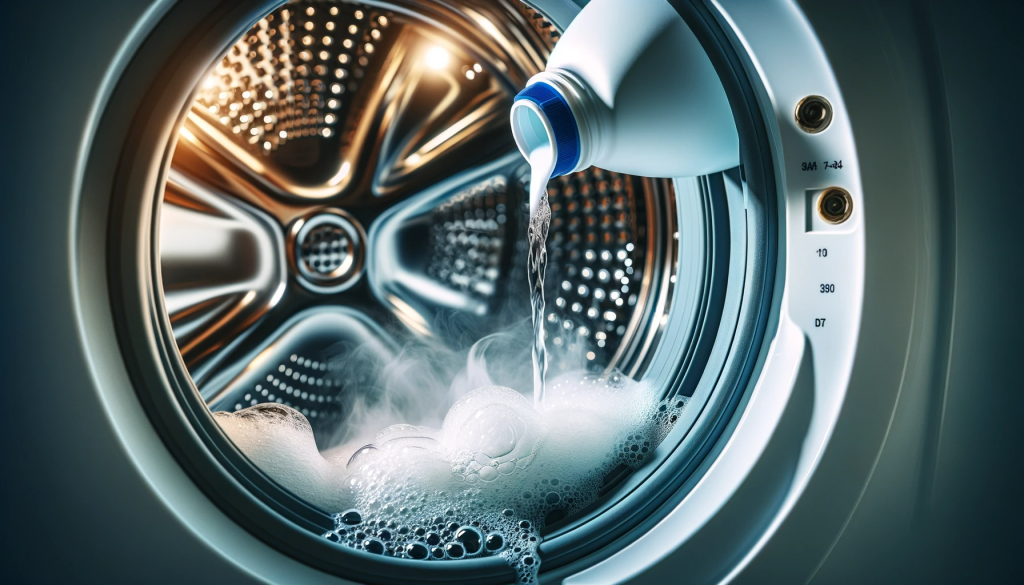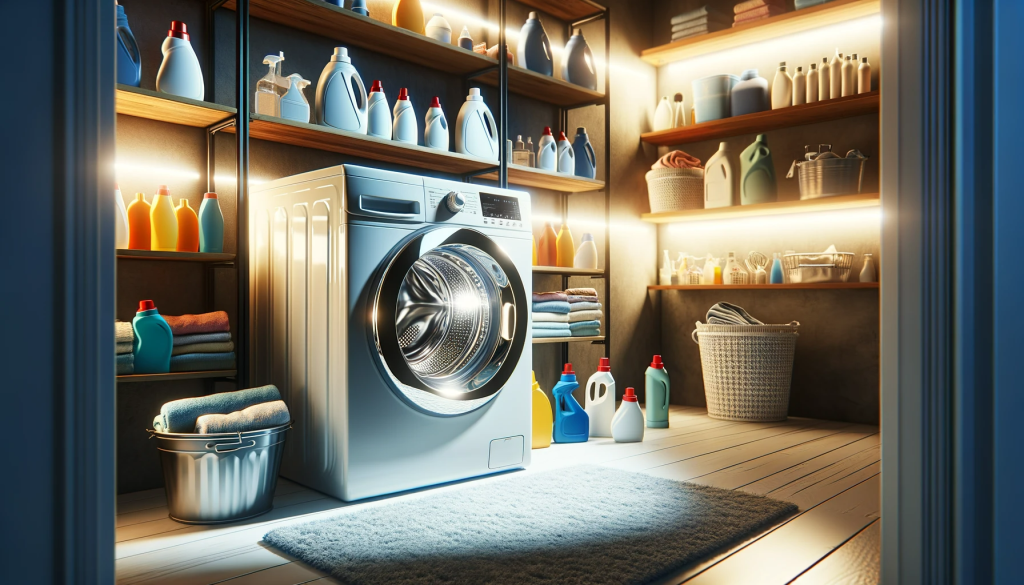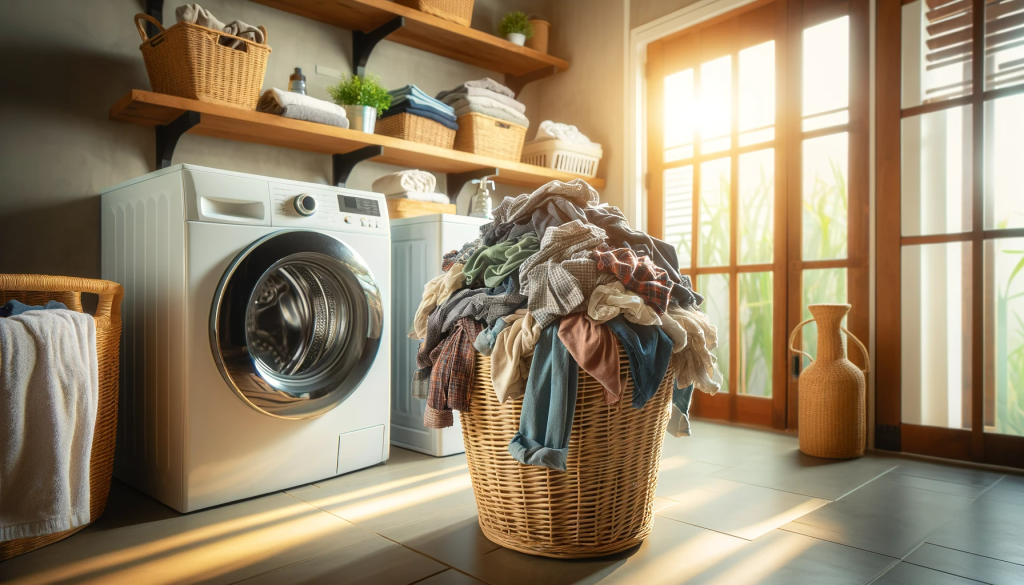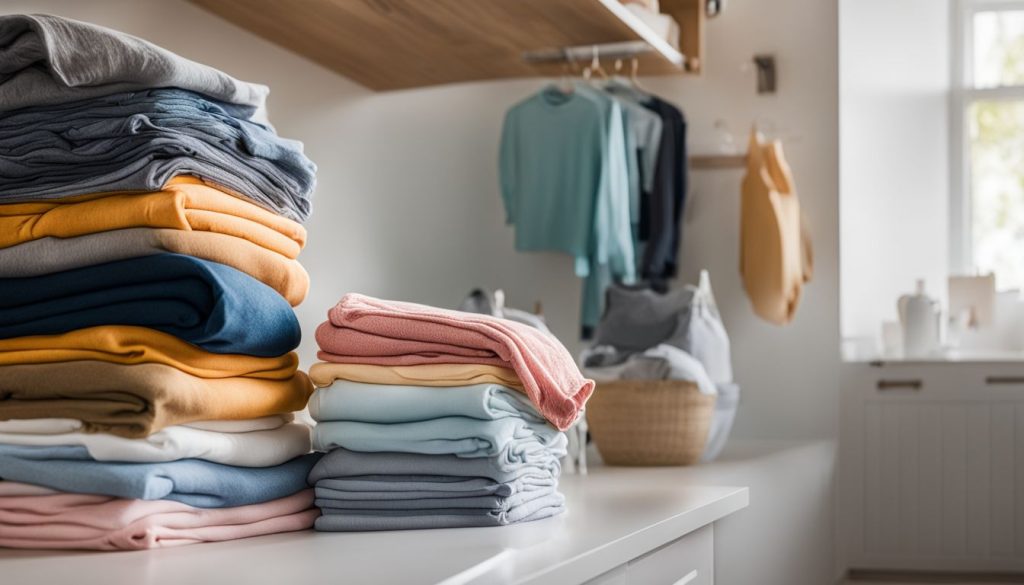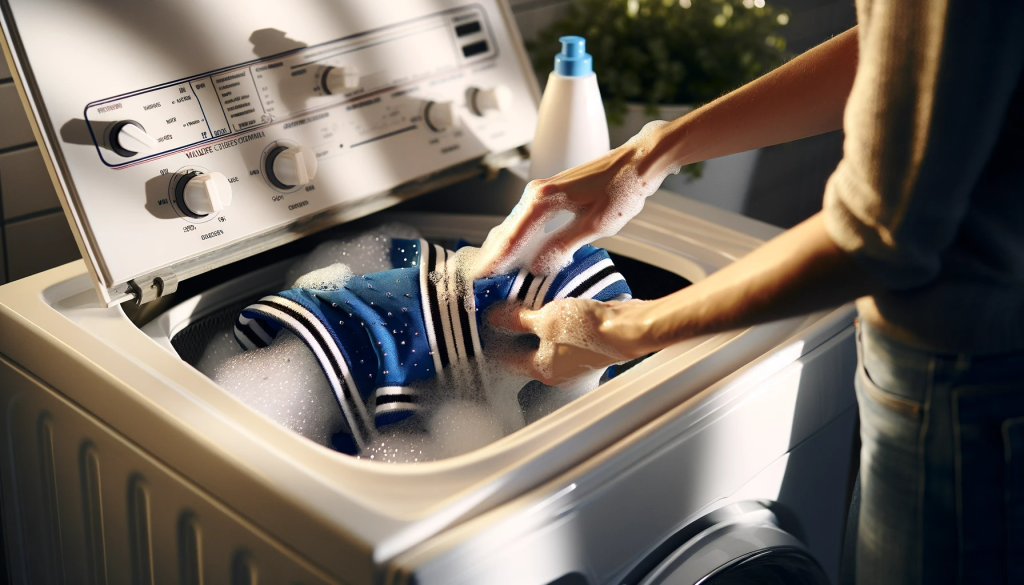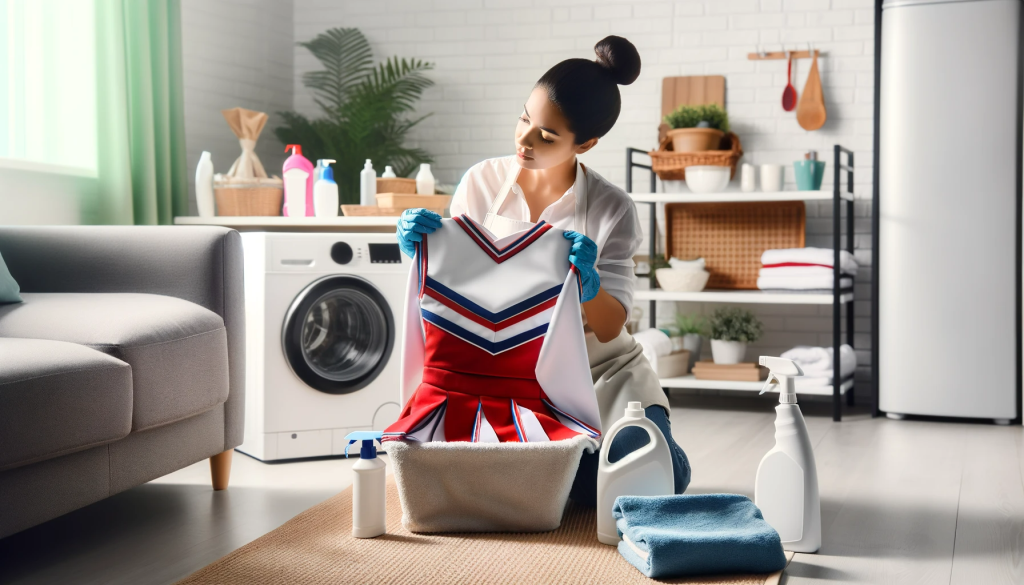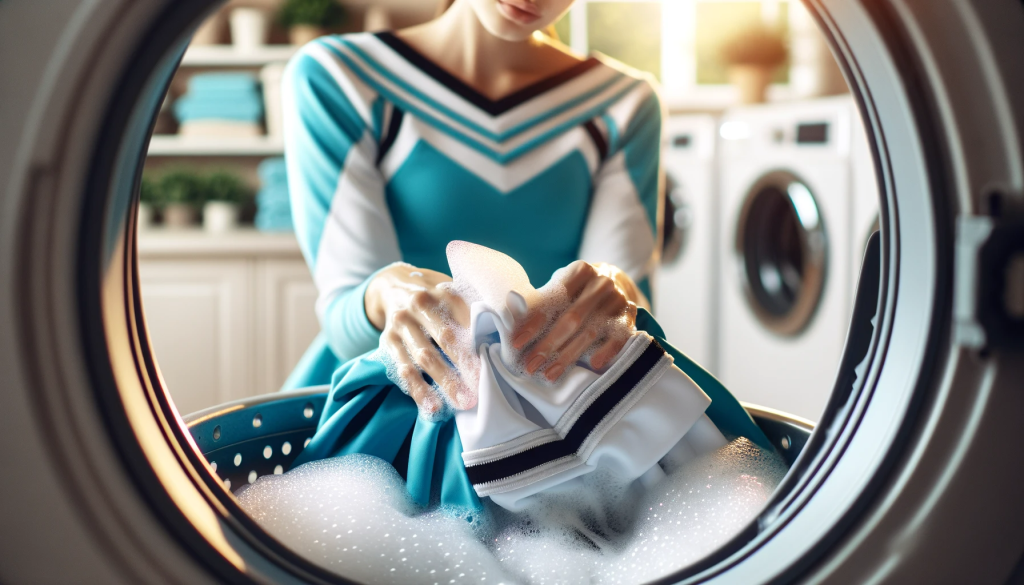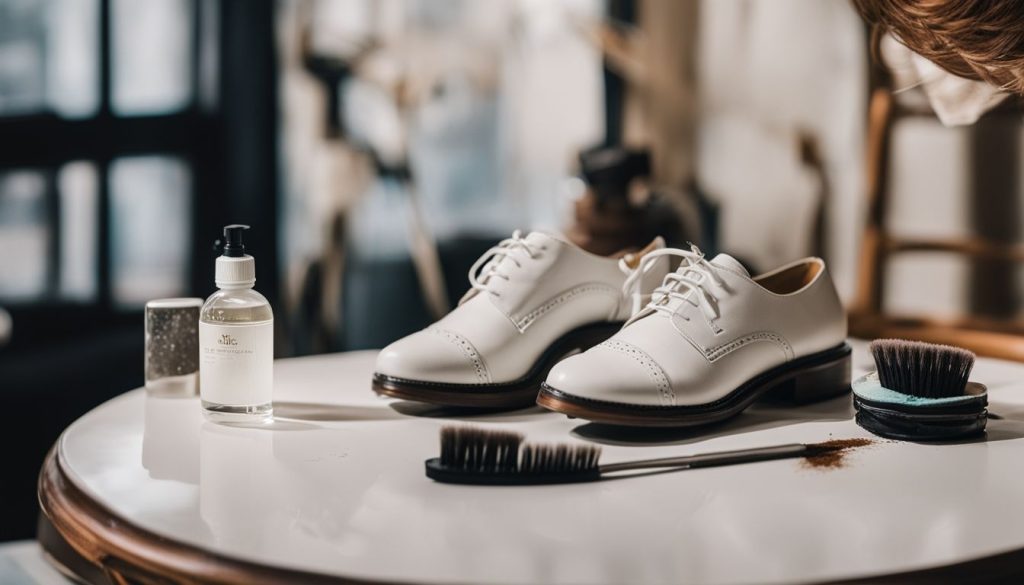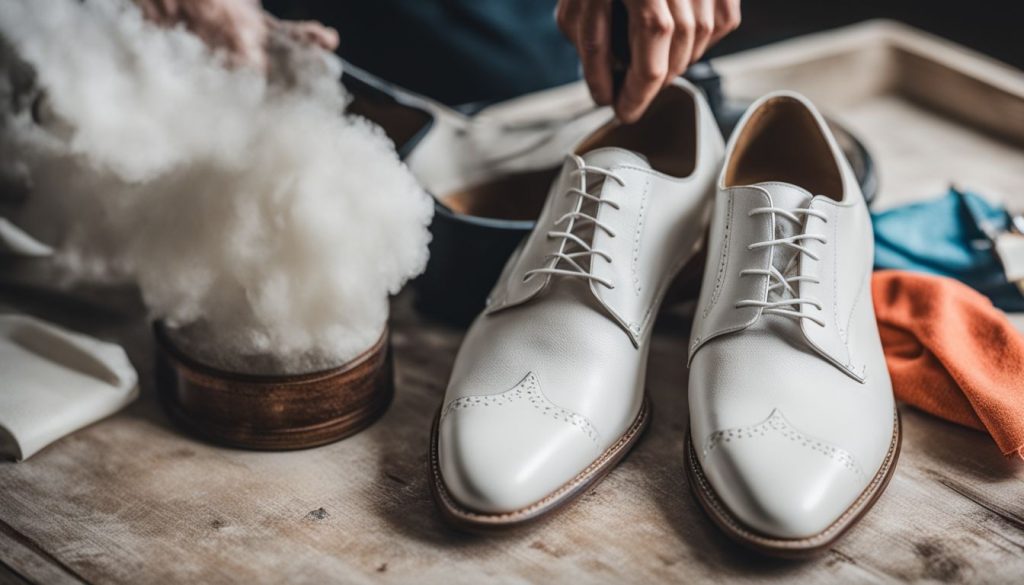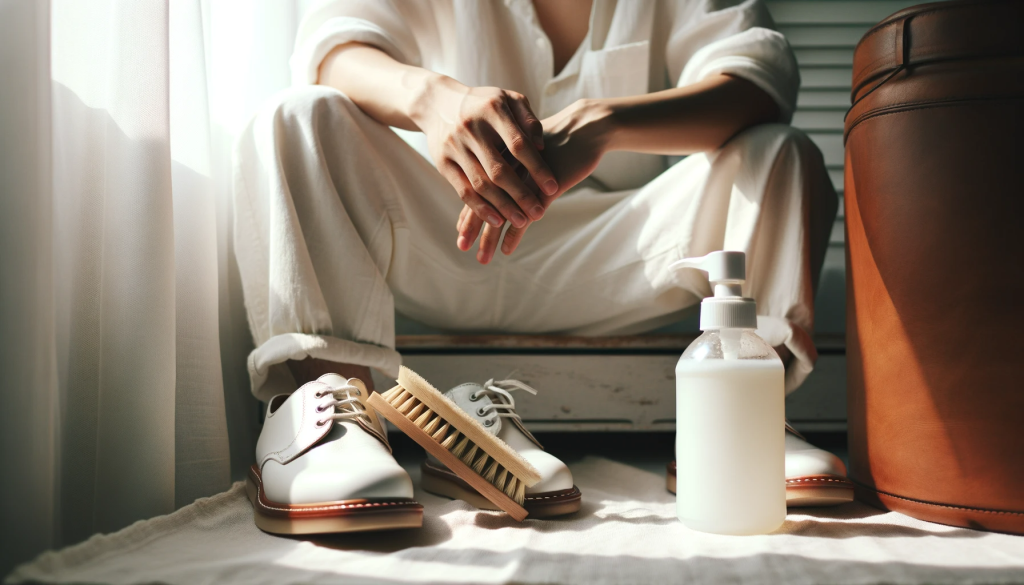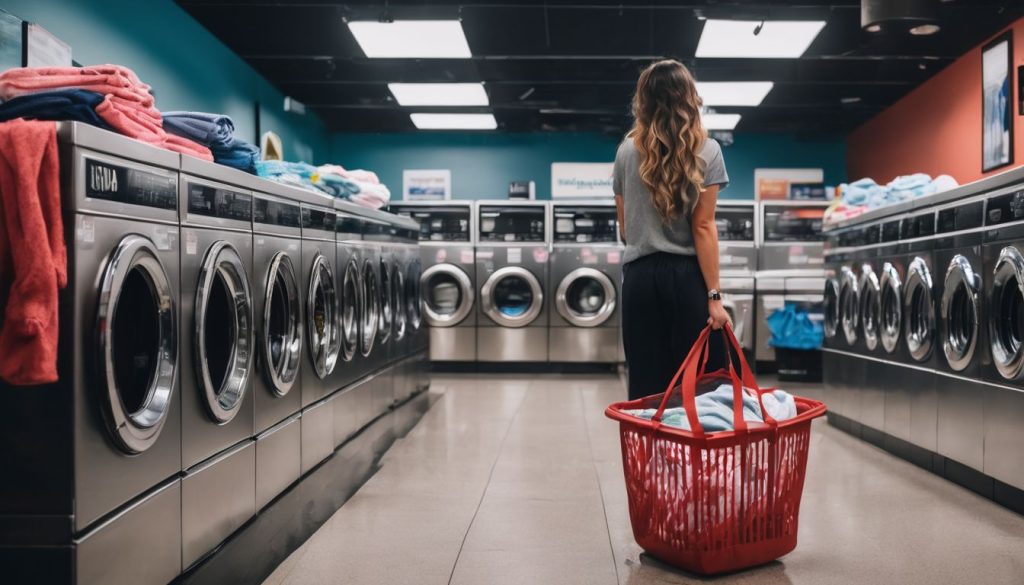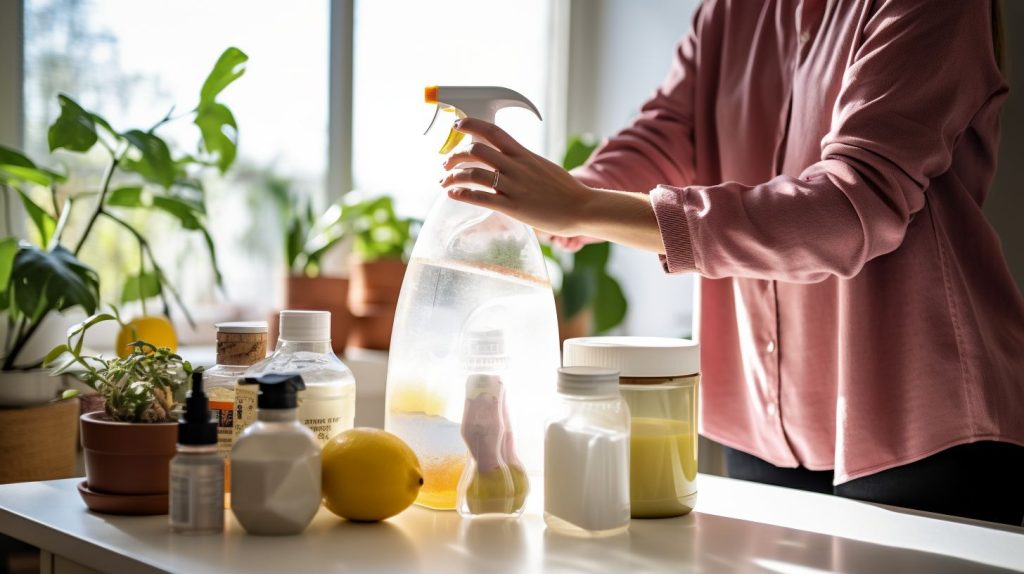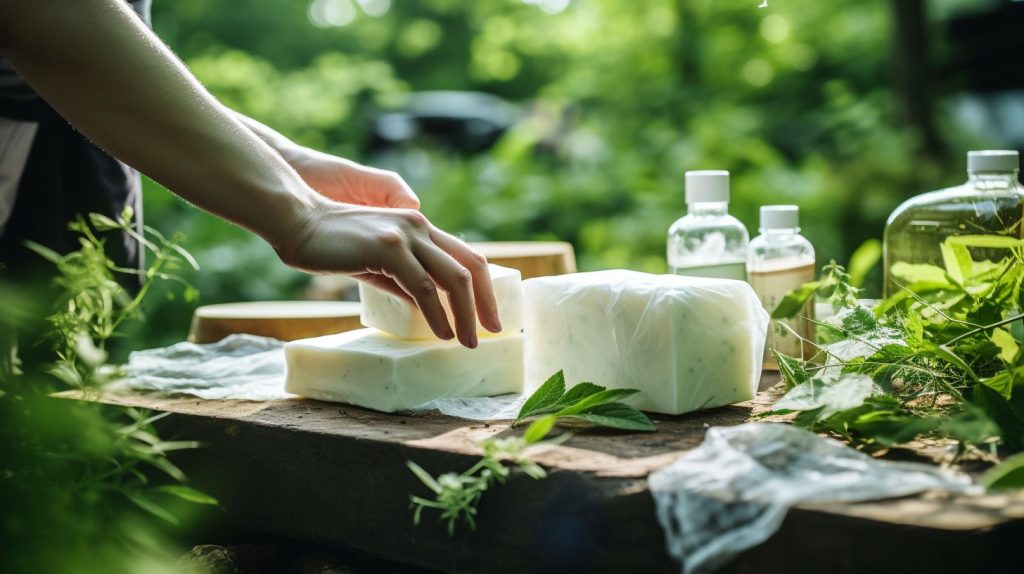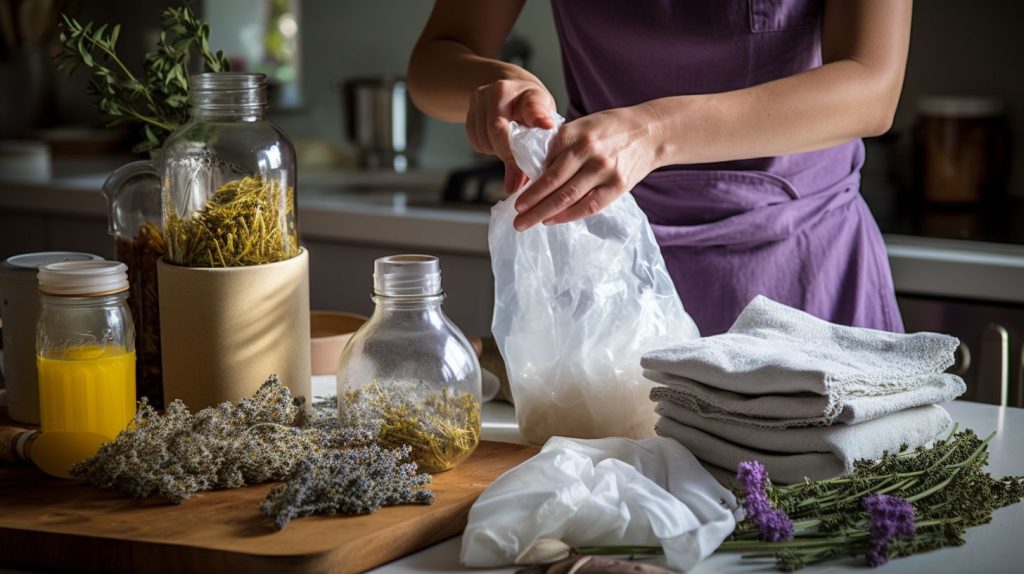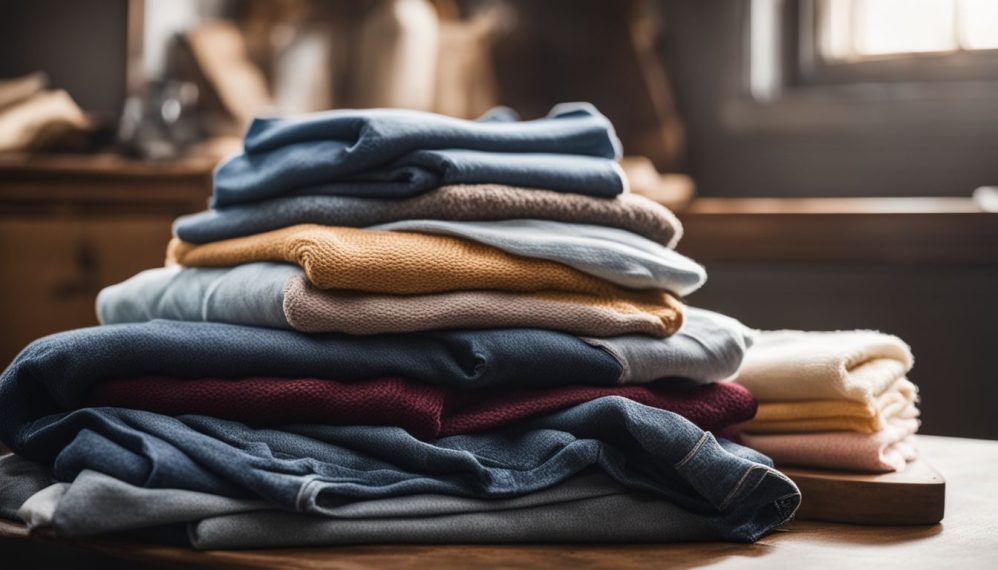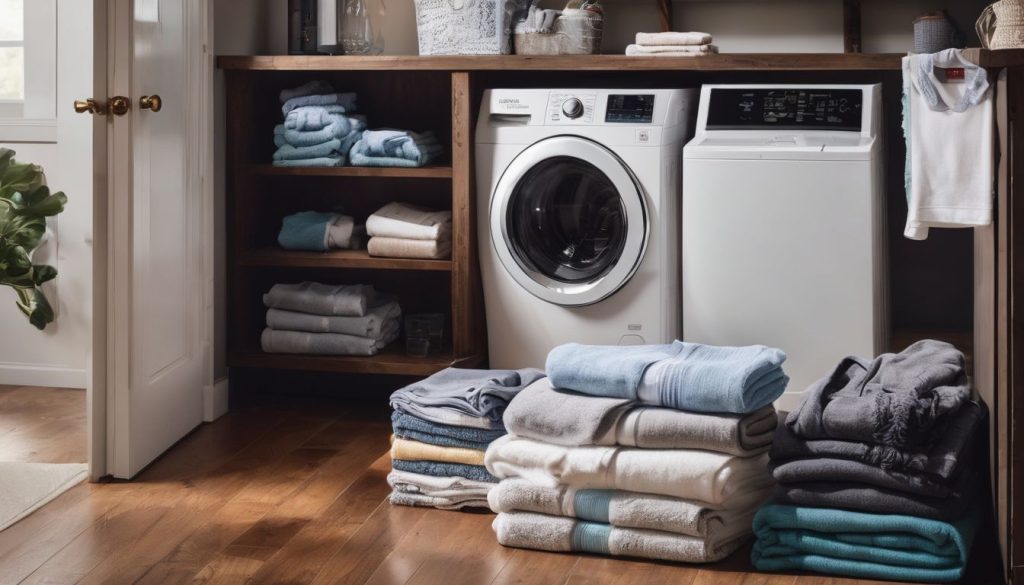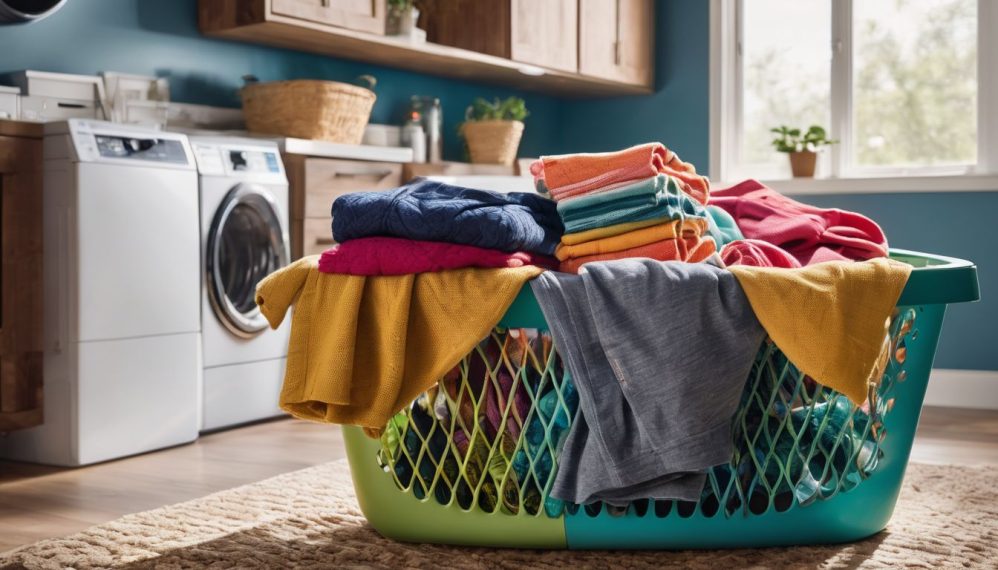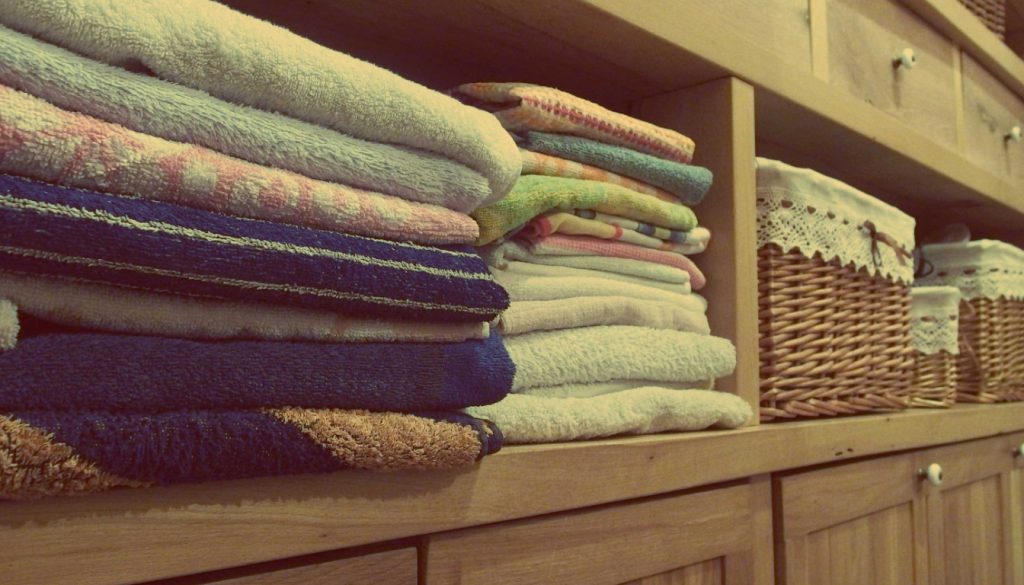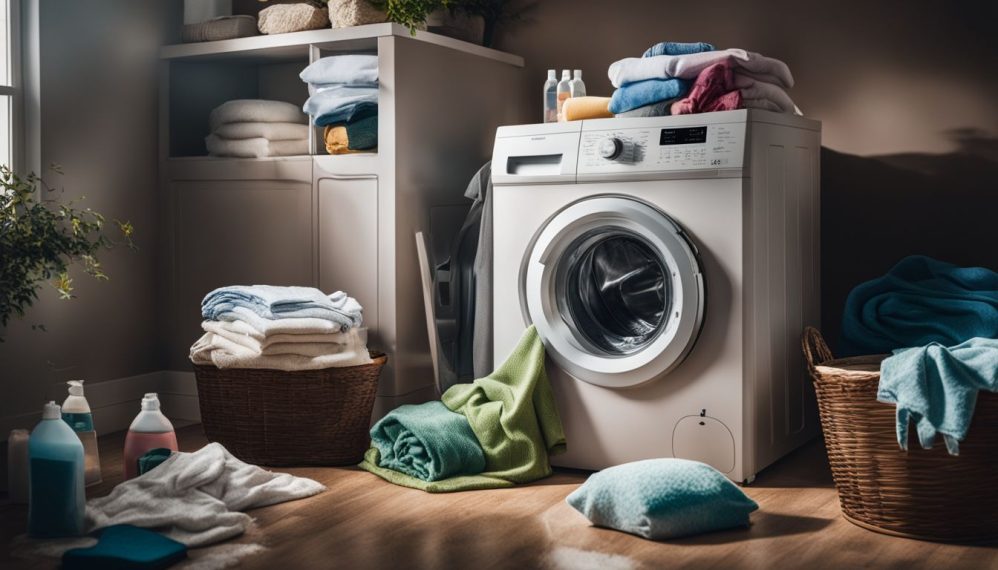
Separating Laundry Facts And Myths: What You Need To Know
Laundry day often comes with a set of worries about the right and wrong ways to handle your clothes. Did you know that some common laundry practices are actually myths? Our post will guide you through these laundry myths, teaching you the facts and helping protect the life of your garments.
Stay tuned – it’s time to get savvy with suds!
Key Takeaways
- Using the wrong stain removal method can set stains permanently, so it’s important to treat each type based on its specific needs and fabric guidelines.
- Clean your washing machine regularly with a wipe – down and occasional deep clean cycle to prevent mold and odors for more efficient cleaning.
- More detergent does not mean cleaner clothes; using the right amount prevents residue buildup and ensures clothes get truly clean.
- Hot water should only be used when necessary as it can fade colors and shrink fabrics; follow care labels for temperature recommendations.
- Too many dryer sheets can leave waxy residues reducing towel absorbency, use the recommended number of sheets per load size.
Common Laundry Myths
Some common laundry myths include the belief that all stains can be removed by one method, the idea that you don’t need to clean your washing machine, and the misconception that more detergent means cleaner clothes.
Let’s debunk these myths and reveal the facts about proper laundry care.
All Stains Can be Removed by One Method
The idea that every stain will vanish with the same treatment is one of those laundry myths that can cause more harm than good. Different stains cling to fabric in unique ways, and using the wrong method could set them permanently.
For example, oil-based stains require a different strategy than protein-based ones like blood or sweat. It’s crucial to identify the type of stain first and then select an effective cleaning solution.
Grease spots often need a degreasing agent, while organic marks may benefit from enzyme-based cleaners.
Tackling stains also varies depending on the fabric involved. Delicate materials such as silk or wool demand gentle care compared to durable cotton or synthetics. Pretreatment plays a significant role; applying a specialized remover before tossing clothes into the washing machine can make all the difference in lifting stubborn blemishes.
Temperature settings are equally important as some stains dissolve best in cold water, whereas others only loosen up under hot water conditions. Always check garment labels for temperature guidelines and substance-specific instructions to keep your clothes looking their best without ruining them through guesswork.
You Don’t Need to Clean Your Washing Machine
Your washing machine works hard to get your clothes clean, but it also needs a good scrub every now and then. Over time, soap residue, fabric softener, and damp clothing can create a breeding ground for mold and unpleasant odors.
Cleaning your washer ensures that it runs efficiently and keeps your clothes smelling fresh.
Make it a habit to wipe down the drum, gasket, and detergent dispensers regularly. For a deeper clean, run an empty cycle with hot water and vinegar or a specialized cleaner every few months.
This routine maintenance helps prolong the life of your washing machine while contributing to better laundry results each time you wash.
More Detergent Means Cleaner Clothes
Pouring extra detergent into the washing machine might seem like a fast track to cleaner clothes, but it’s actually a common laundry myth. Overdoing the suds can lead to residue buildup on fabrics and inside your washer, leading to the exact opposite of the desired cleanliness.
Clothes need just the right amount of detergent – typically what’s recommended by the manufacturer – for optimal results. Using excessive amounts doesn’t enhance cleaning power; in fact, it may trap dirt within fabric fibers as excess bubbles cushion grime rather than removing it.
Examine your clothing care routine and consider cutting back on detergent if you’ve been heavy-handed with measuring. This simple change can improve clothing lifespan and ensure that each garment gets truly clean.
A proper measurement supports efficient cleaning without leaving behind any sticky or filmy substances that dull colors and attract more dirt over time. Keep detergents at their appropriate levels for laundry best practices that preserve both your wardrobe and washing machine performance.
Hotter Water Equals Better Cleaning
Hotter water isn’t always the solution for cleaner clothes. Using hot water can be beneficial for removing grease and oil-based stains from heavily soiled items, but it’s not necessary for every load.
In fact, using hot water excessively can cause colors to fade and fabrics to shrink over time.
To achieve optimal results, consider the fabric type and the nature of the stains before selecting a wash temperature. Understanding your clothing care labels will guide you in choosing between cold, warm, or hot water settings based on your specific laundry needs.
More Dryer Sheets Equal Better Results
Using more dryer sheets does not guarantee better results. The appropriate number of dryer sheets should be used according to the size of the load and the desired level of fabric softness and static control.
Excessive use of dryer sheets can leave a waxy residue on clothing, reducing their absorbency and breathability. It’s important to follow manufacturer recommendations for optimal results.
Proper usage ensures that clothes come out of the dryer feeling soft without any cling or residual chemicals. Using too many sheets is unnecessary and can even have negative effects on your laundry, so it’s best to use them as directed for ideal outcomes.
Hand Soaps Can Clean Clothes Just as Well
When using hand soaps to clean clothes, it’s essential to remember that they may not effectively remove dirt and stains, as they lack the specific ingredients found in laundry detergents.
The pH levels and surfactants in hand soaps are not designed for the effective cleaning of fabrics, which could result in residue buildup and dingy clothing over time.
Understanding the appropriate use of laundry detergent is crucial for maintaining clean clothes. By following care label instructions and using the right amount of detergent, you can ensure that your clothes are effectively cleaned without damaging the fabric or causing residue build-up.
Debunking Myth and Revealing Facts
Properly cleaning your washing machine is essential for maintaining its performance and longevity. Using the right amount of detergent and sorting your laundry by care label can also make a significant difference in preserving the quality of your clothes.
Appropriate Ways to Clean Your Washing Machine
To maintain a clean washing machine, follow these steps:
- Wipe down the door seal and drum after each use to prevent mold and mildew.
- Run a cleaning cycle with a washing machine cleaner once a month to eliminate bacteria and odors.
- Remove and clean the detergent dispenser drawer regularly to prevent residue buildup.
- Inspect and clean the filter, if applicable, to ensure proper drainage and prevent blockages.
- Leave the door open between cycles to allow air circulation and prevent mold growth.
Proper Detergent Usage
Use the right amount of detergent according to the load size and soil level. Measure carefully to avoid using too much or too little detergent, which can affect cleaning efficiency.
Follow the manufacturer’s guidelines for your specific washing machine and type of fabric to ensure optimal results.
Select a detergent suitable for the type of clothes being washed. Different fabrics require different detergents, so make sure you use one that matches your laundry needs. Always read labels and instructions to understand proper usage and dosing for best outcomes without damaging your clothing or washing machine.
The Truth About Washing Underwear
Transitioning from proper detergent usage, it’s essential to understand the truth about washing underwear. Many people believe that washing undergarments in hot water is necessary to get them clean.
In reality, using hot water can actually damage the elastic in underwear and lead to premature wear and tear of the fabric.
To avoid damaging your underwear, wash them in cold or warm water with a mild detergent. This not only helps preserve the fabric but also ensures that any delicate lace or embellishments on your lingerie stay intact.
The Right Amount of Dryer Sheets
Transitioning to the effectiveness of dryer sheets, it’s crucial to note that using more doesn’t necessarily lead to better results. Using too many dryer sheets can leave a waxy residue on clothes and reduce the absorbency of towels.
One or two sheets per load are sufficient for most standard-sized loads. Overuse can also potentially clog the lint trap in your dryer, leading to reduced airflow and longer drying times.
It’s essential to follow guidelines from the manufacturer as well as consider personal preferences when determining the right amount of dryer sheets for each load.
Properly Sorting Laundry
Properly sorting laundry is essential to preserve the quality of your clothes and ensure effective washing. Ensure that you:
- Separate whites, darks, and colors to prevent color bleeding.
- Sort delicate fabrics, like silk and lace, from sturdier items such as jeans or towels to avoid damage.
- Check garment care labels for specific washing instructions before sorting.
- Wash heavily soiled items separately to prevent transferring dirt to other clothes.
- Avoid mixing lint-producing fabrics with lint-collecting fabrics to reduce fuzz on clothes.
The Proper Temperature for Different Types of Stains
For protein-based stains like blood or sweat, use cold water to prevent setting the stain. Hot water can be effective against oily stains as it helps dissolve and remove grease. Lastly, for color-safe bleachable stains such as coffee or tea, opt for warm water to help break down the compounds in the stain without damaging fabrics.
When dealing with tough stains, using the right temperature is crucial to effectively remove them. Cold water is best for protein-based stains while hot water works well on oily ones.
Warm water should be chosen for color-safe bleachable stains.
Using the Right Amount of Detergent
Using the right amount of detergent is crucial for achieving clean and fresh-smelling laundry. Too much detergent can leave residue on clothes, while too little may not effectively remove stains and odors.
To determine the appropriate amount, consult the detergent package for guidelines based on load size and soil level. Following these recommendations will ensure optimal cleaning results without damaging fabric or causing skin irritation.
Properly measuring and dispensing detergent also helps in conserving this essential laundry supply, reducing waste, and saving money in the long run. By using the correct amount of detergent, you’ll achieve cleaner clothes while promoting sustainability through responsible usage.
Additional Laundry Tips
Properly washing bras can extend their lifespan and maintain their shape. It’s also important to sort clothes by care label and follow the instructions for washing and drying to avoid damage.
Sorting Clothes by Care Label
When sorting clothes, always pay attention to the care label attached to each item.
- Check the care labels on clothing for specific washing instructions.
- Group items according to the recommended wash temperature, such as cold, warm, or hot water.
- Separate garments based on the care label’s guidance for drying methods, such as tumble dry, line dry, or lay flat to dry.
- Sort clothing by the recommended detergent type; for example, regular detergent versus delicate detergent.
- Consider any special care instructions specified on the label, such as handwashing or dry cleaning only.
- Ensure that you adhere to any additional care information provided on the label for preserving fabric quality and color longevity.
- Use these labeled guidelines as a crucial tool in maintaining and extending the lifespan of your clothing.
The Importance of Following Care Label Instructions
When sorting clothes, it is crucial to follow the care label instructions to maintain their quality and prolong their lifespan. Care labels provide essential information on how to properly wash and dry different fabrics, helping you avoid damaging your clothing.
By following these instructions, you can ensure that your garments are cleaned effectively while preserving their color and fabric integrity.
Understanding the specific care requirements for each garment also allows you to sort your laundry more efficiently. This helps prevent color bleeding and ensures that delicate items are handled with the appropriate washing settings.
Properly Washing Bras
When it comes to properly washing bras, it is crucial to hand wash them in cold water using a gentle detergent. Avoid using bleach or fabric softener, as these can damage the delicate fabrics and elastic.
Gently squeeze out excess water after washing and lay them flat on a towel to air dry – never wring them out or put them in the dryer. Following these care instructions will help extend the lifespan of your bras and keep them in good condition.
It’s important to remember that proper care for your intimate wear begins with how you wash your bras. By adhering to these simple guidelines, you can ensure that they remain in good condition for longer periods, saving you money over time while promoting optimal hygiene and comfort.
Dealing With Stains
Properly washing bras is essential for maintaining their quality. When it comes to dealing with stains, follow these tips to effectively remove stains and preserve your clothes:
- Blot the stain as soon as possible to prevent it from setting.
- Apply a stain remover or detergent directly to the affected area and gently rub the fabric together.
- For tough stains, pre – soak the garment in a mixture of water and stain remover before washing.
- Check the care label for specific instructions on treating the type of fabric.
- Wash stained items separately to avoid spreading the stain or damaging other garments.
- Use cold water for blood or sweat stains, while hot water can be effective for oil – based stains.
- Avoid using bleach on colored fabrics; opt for color – safe bleach if necessary.
- Inspect the garment after washing to ensure the stain has been completely removed before drying.
Avoiding Overloading the Washer
Overloading the washer can cause clothes to come out less clean. The machine needs enough space for water and detergent to move around the items. It’s also essential not to pack in too many pieces, as this can stress the machine during the spin cycle.
When overcrowded, clothes may not rinse properly or could develop wear and tear faster. Overloading might even lead to unbalanced loads and loud banging noises during the wash cycle, which are signs of potential damage to both your clothing and washing machine.
Be cautious about overfilling your washer if you want well-cleaned, undamaged clothes.
Conclusion – Laundry Myths and Facts
In conclusion, separating laundry facts from myths is crucial for maintaining clean and well-cared-for clothes. Proper washing machine maintenance and detergent usage are essential for extending clothing lifespan.
Remembering to sort laundry by care label instructions and dealing with stains promptly will help preserve fabric quality. Following these laundry best practices will ensure that your clothes stay fresh and vibrant for longer.
FAQs
1. Why is it important to separate laundry?
Separating laundry helps prevent color bleeding and ensures that different fabrics get the appropriate washing treatment.
2. Can I wash all colors together in one load?
No, it’s best to separate light and dark-colored clothing to avoid color transfer during the wash cycle.
3. Do I need to hand-wash delicates separately from other items?
Yes, delicate items such as lace, silk, or lingerie should be hand-washed or placed in a mesh laundry bag before being washed with other garments.
4. Is it necessary to sort laundry based on fabric type?
Yes, sorting laundry by fabric type (e.g., cotton, synthetics) helps ensure that each material receives the appropriate water temperature and agitation level during washing.
5. Should I always follow garment care labels when separating laundry?
Yes, following garment care labels is crucial for proper laundering; they provide specific instructions tailored to each item’s fabric and construction requirements.



